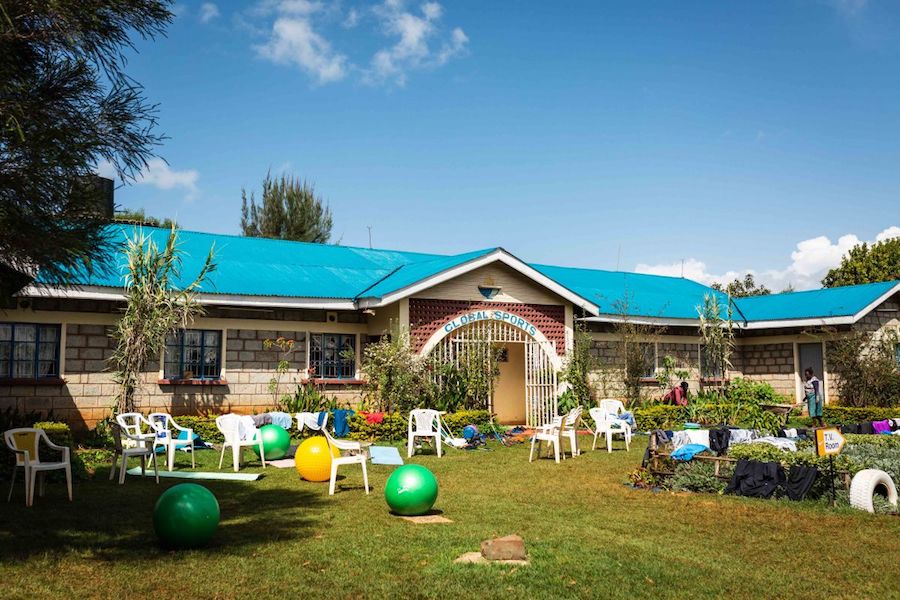
When Eliud Kipchoge set a new world record for the marathon at the Berlin Marathon in 2018, most spectators were amazed at what they had witnessed. Not only had Kipchoge established himself as the fastest marathon runner ever, but with a time of 2:01:39, the Kenyan completely shattered the existing record by an incredible 1 minute and 20 seconds.
Just a year before that, Kipchoge was part of Nike’s Breaking2 Project, a promotional event surrounding the Nike Vaporfly 4% shoe that sought to break the 2-hour mark in the marathon. Racing on a Formula One track in Italy with a group of world-class pacers, Kipchoge narrowly missed the mark by running a 2:00:25.
Kipchoge is now gearing up for his next challenge: a second effort to become the first person to run a sub-two hour marathon in the INEOS 1:59 Challenge. The event takes place in Vienna on October 12th, 2019 on a public course, where crowds will certainly line up to witness a potential historic feat.
But how does Kipchoge train for such mammoth tasks? In particular, how is he preparing for the upcoming event in Vienna?
We’re going to take a look at his training over two parts: 1) physical preparation, and 2) mental preparation and nutrition.
Kipchoge has previously said that the physical aspect of his training remains similar ahead of each event. A repeatable structure keeps training simple and allows Kipchoge to measure how he’s doing in comparison to previous preparations.
As such, training is split into three phases, whereby the intensity of the entire program increases with each phase.
Phase 1
Phase one focuses on building a base-level of fitness through gym workouts, aerobics and light runs.
It is a preparatory stage, akin to the standard workout plans a professional athlete would stick to in order to simply ‘stay in shape’ during the off-season.
However, it does provide Kipchoge with a chance to strengthen his muscles and increase joint flexibility. This conditioning of the body is vital for injury prevention ahead of what will be an extremely tough and taxing period of training over the next few months.
The body must be capable of taking the strain. Professional marathon runners are famed for their endurance, but muscular, ligament and tendon strength are the bedrocks of that endurance.
Phase 2
Phase two is known as the loading phase.
Kipchoge moves into a special training camp with other athletes in Kaptagat, Kenya. The region is famed for long-distance training (Kipchoge’s camp isn’t the only one in the area).

Kipchoge’s Training Camp
And there’s a good reason why– elite endurance athletes all subscribe to the mantra of ‘train high, compete low’. Kipchoge is no different. The camp in Kaptagat is more than 2400m above sea-level.
At this elevation, there is less oxygen available in the atmosphere. Oxygen allows our cells to create energy. When we push the body, we increase our need for energy. As a result, we breathe quicker and our heart beats faster, pumping newly-oxygenated blood to our energy-sapped cells. At altitude, this whole process becomes much harder.
Over time, the body is forced to adapt; producing extra red blood cells to capture and carry more oxygen.
This has a lasting effect, so when an athlete then competes at a lower, oxygen-rich altitude, their ability to carry additional oxygen can provide a performance boost of 1-2%. At the very highest levels of the sport, small percentage gains are the difference between a record-breaker and a runner-up.
With everything in phases two and three completed at altitude, Kipchoge is training in a more difficult environment than he’ll compete in.
The training itself is varied. Most days consist of two sessions: one in the morning and one in the afternoon. The typical week is made up of the following:
1 x long run of 30-40km
Multiple easier runs, up to 25km
2 x Fartlek sessions
1 x Strength and conditioning session
2 x Core sessions
The strength, conditioning and core sessions are a continuation of the work completed in phase one, aiding stabilization and injury prevention. Kipchoge has mentioned the core sessions, in particular, were an addition to the program ahead of the Berlin Marathon.
By the end of phase two, Kipchoge and his fellow athletes will be quite familiar with covering huge distances (on average, they run 200km a week) and their pace will have increased substantially.
Phase 3
Kipchoge was a successful track athlete before switching to road running. In the 5000m of the Olympics, he won Bronze in 2004 and Silver in 2008. In phase three, the critical training period, Kipchoge leans on those experiences by adding in track workouts once a week.
Track sessions consist of interval training and time-trials. This works on the paces Kipchoge will need to run in order to hit his target. For example, Kipchoge will need to hit an average pace of 2.84 minutes per kilometer in order to run 01:59:59. Track sessions come in addition to the plan outlined in phase two, with the body now put under immense strain.
It’s therefore important to train smart in order to avoid a burn-out.
This is done through a simple, varied and balanced approach. The long runs continue to get the aerobic energy system working hard, which improves endurance. The fartlek and track sessions condition the anaerobic threshold, which increases the speed Kipchoge can run before his body starts producing lactic acid.
Endurance and speed: a world-record attempt cannot have one with the other. While amateur runners will often focus on preparing the body to complete 26.2 miles of continuous running (a hard-enough task!), elite athletes are working hard on both endurance and speed.
Phase three will take Kipchoge all the way up to right before an event, minus time for traveling from the camp in Kenya to the location of the event.
One final note on physical preparation– which is important throughout all phases of training– is the focus on recovery. Kipchoge has up to three massage and physio sessions a week, plus two ice-baths, after particularly brutal runs. This helps to reduce inflammation and resolve any aches or pains.
While parts of Kipchoge’s physical preparation are comparable to typical marathon training for any athlete (speed workouts, tempo runs, long runs), he also takes it to a level that only elites can truly master.
That said, physical preparation is only one part. In the next part, we’ll dive into both the mental and nutritional aspects of Kipchoge’s training, to get a full picture of how the world’s fastest marathoner builds towards a record-breaking attempt.
You can watch Kipchoge’s feat live on YouTube, and subscribe to the channel for any updates.
Have something to say? Leave a Comment

